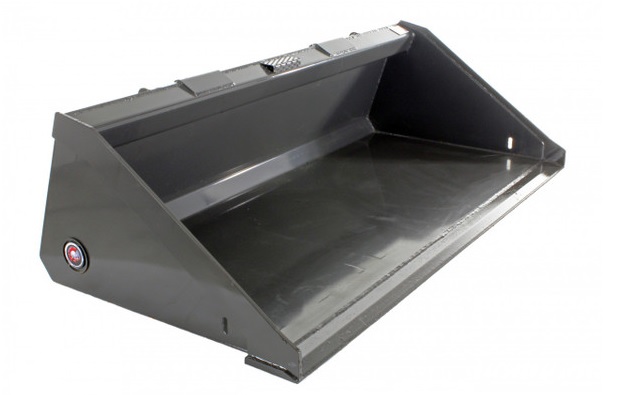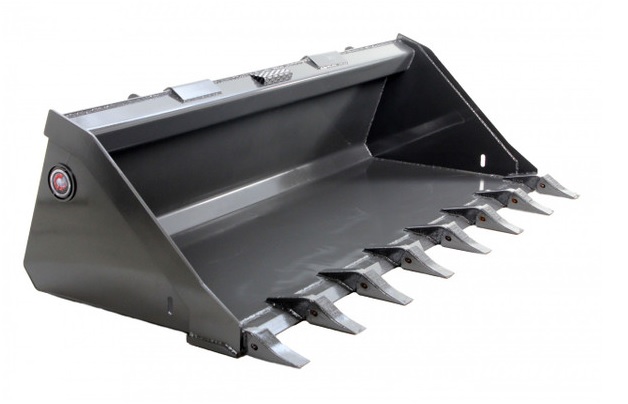The Bucket Challenge: Unveiling the Strengths and Weaknesses of Different Skid Steer Buckets
Posted by Lee Padgett on 4th Mar 2024
Selecting the optimal skid steer bucket for a given task is crucial for maximizing efficiency and productivity on any construction site. While there are a wide variety of skid steer buckets for sale, each type possesses unique advantages and limitations.
To assist equipment operators and project managers in making informed decisions, we decided to take on a Bucket Challenge. This article will put four popular skid steer bucket types to the test across various scenarios, unveiling their specific strengths and weaknesses.
Different Types of Skid Steer Buckets for Sale
- Low Profile Bucket: Characterized by its compact design and low center of gravity, this bucket excels in confined spaces and offers superior maneuverability.
- Long Bottom Bucket: Featuring a longer bottom for increased material capacity, this bucket is ideal for carrying and leveling large volumes of loose material.
- Track Duty Bucket: Constructed with heavy-duty materials and wear-resistant components, this bucket is specifically designed for handling challenging tasks like demolition debris and abrasive materials.
- Snow & Litter Bucket: Equipped with a wide, shallow profile and lightweight construction, this bucket is well-suited for snow removal, light material handling, and clearing debris.
Areas to Evaluate
In this review, we want to take a three-pronged approach to evaluate the performance of each bucket type:
- Digging Efficiency: This test assessed the bucket's ability to maneuver and penetrate various surfaces, simulating real-world digging scenarios.
- Loading Capacity: The buckets were evaluated based on the volume and weight of material they could effectively load and transport.
- Obstacle Course: This final test replicated real-world job sites with uneven terrain, obstacles, and tight turns, assessing the bucket's maneuverability and adaptability in challenging conditions.

Which Skid Steer Bucket Takes the Top Spot?
1. Digging Efficiency
The Low Profile Bucket emerged victorious due to its compact size, low center of gravity, and curved bottom, allowing for effortless maneuvering and deep trench digging in confined spaces.
While not as agile, the Long Bottom Bucket compensated with its extended bottom, enabling efficient removal of large quantities of material in a single pass.
The Track Duty Bucket and Snow and Litter Bucket were not evaluated in this category due to their design not being optimized for digging tasks.
2. Loading Capacity
The Long Bottom Bucket reigned supreme in this round, effortlessly filling a waiting truck with its superior capacity.
The Low Profile Bucket, while not holding as much material, maintained its advantage of maneuvering seamlessly in tight spaces.
The Track Duty Bucket proved its worth by handling heavy loads like gravel with ease.
The Snow and Litter Bucket, though not ideal for heavy materials, performed adequately with lighter loads like mulch.
3. Obstacle Course
The final test showcased the Low Profile Bucket's exceptional agility once again. Its low center of gravity enabled it to navigate the course with ease, conquering uneven terrain and tight corners.
The Long Bottom Legend, although less maneuverable, handled the terrain well but faced some challenges with tight turns.
The Track Duty Titan performed adequately but required careful handling due to its higher profile, while the Snow and Litter Superstar navigated smoothly due to its lightweight construction but might struggle with larger obstacles.

Teeth or No Teeth? A Simpler Skid Steer Bucket Choice
The bucket comparison highlighted different bucket types, but another key factor exists: teeth. Many buckets sport weld-on or bolt-on teeth for specific applications. But are they always needed? Here's a simplified breakdown:
Buckets with Teeth:
- Pros: Enhanced penetration, increased productivity, versatile for tough digging and debris.
- Cons: Potential damage to delicate surfaces, increased wear and tear, not always necessary.
Buckets Without Teeth:
- Pros: Smoother operation, reduced maintenance, lower cost.
- Cons: Reduced digging performance, less versatile, may require additional attachments.
Consider the materials you handle, surfaces you work on, and your budget. With teeth, conquer tough jobs, but avoid using them on delicate surfaces. No teeth offer a smoother operation and lower costs, but may require extra attachments for demanding tasks.
Choosing the Right Bucket for the Job
Looking at the results highlights the unique strengths and limitations of each skid steer bucket type. It is crucial to understand that there is no single "best" bucket; the optimal choice hinges entirely on the specific requirements of your project.
- Low Profile Bucket: Ideal for digging in confined spaces and requiring exceptional maneuverability.
- Long Bottom Bucket: The champion for efficiently transporting large volumes of loose materials.
- Track Duty Bucket: Built to conquer tough jobs involving heavy and abrasive materials.
- Snow and Litter Bucket: Perfect for light material handling, debris clearing, and snow removal.
Selecting the right skid steer bucket is an investment in your project's success. At Spartan Equipment, we offer a comprehensive selection of skid steer buckets for sale, including all the ones featured in this analysis. We’re more than ready and available to assist you in choosing the perfect bucket that aligns with your specific needs and empowers you to conquer any construction challenge.
Remember, the right tool for the job makes all the difference, and with the right bucket by your side, you can transform your construction dreams into reality.


